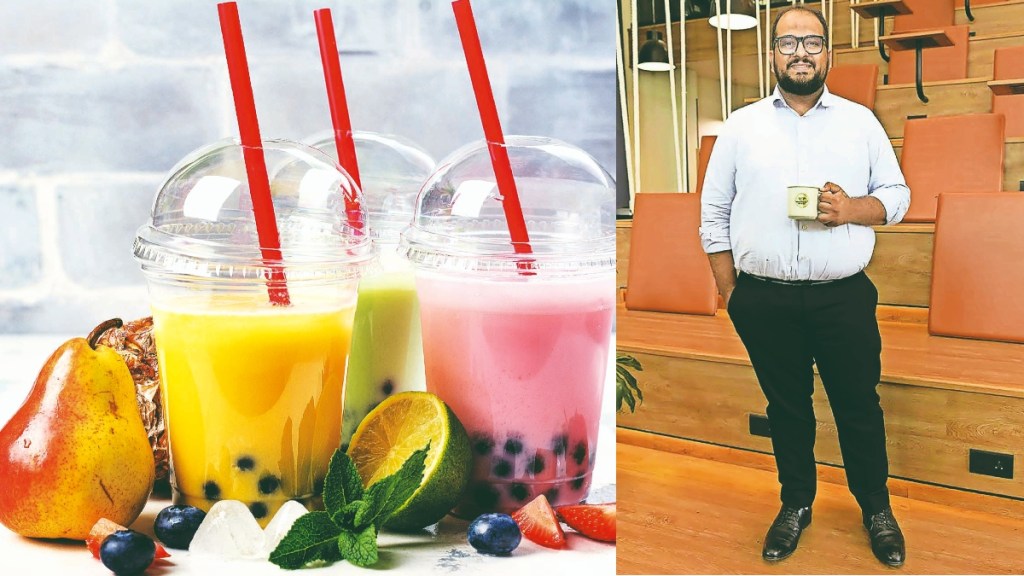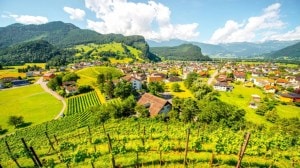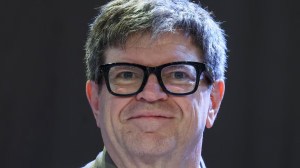Once a quirky East Asian trend, bubble tea is now riding high on India’s rapidly evolving beverage scene. Frothy, chewy, and wildly photogenic, this Taiwanese import has become a Gen Z and millennial favourite, fuelled by social media trends, experimental palates, and a growing appetite for global flavours.
Also known as boba tea, bubble tea blends tea, milk, sugar, and chewy tapioca pearls—fondly referred to as ‘bubbles’ or ‘boba’. Typically served cold in tall cups with oversized straws, the drink is more than a thirst-quencher; it’s a playful, multi-sensory experience.
“You drink them and it’s over. Most beverages are just that. But bubble tea has an element of surprise. The chew, the popping —it’s addictive,” Anirudh Sharma, co-founder of Third Wave Coffee tells FE. “It’s textural. It’s visual. And it grows on you.”
Bubble tea originated in Taiwan in the 1980s, when local tea vendors added sweetened tapioca balls to iced milk tea. These grab-and-go drinks quickly evolved from street-side favourites to global icons.
What was once considered a fad now represents a robust and fast-growing segment in India’s food and beverage industry. According to a report by Custom Market Insights, the Indian bubble tea market—valued at $450 million in 2024—is projected to more than double to $930 million by 2033.
Several international and local brands are tapping into the trend. Gong Cha, Dr Bubbles, and The Bubble Tea Factory have scaled across urban India. Meanwhile, homegrown ventures like Chai Point and Boba Bhai are giving the trend a uniquely ‘desi’ twist.
Chai Point’s Boba Chai introduces India to flavours like Assam tea, basil, mango, and melon. Chaayos, another major player in the café space, has launched a lychee bubble tea that blends tropical sweetness with traditional tea notes.
Third Wave Coffee, the Bengaluru-based cafe chain, entered the boba space in May as part of its seasonal summer menu, introducing Bobbles, a range of drinks infused with popping boba in cold brews, lemonades, and iced teas. The homegrown coffee and food QSR brand has recently launched a curated range of nine bubble teas. The new range of Bobbles features two categories. The first one is Fruit Bobbles that bring bright, juicy flavours to life with vibrant citrus and berry notes with flavours like peach grapefruit, grapefruit strawberry, grapefruit orange and orange strawberry.
The second is Milk Bobbles, which offer a richer, more indulgent experience. Crafted with silky milk base paired with chewy boba, the category includes Thai Bobbles, with bold tea, spices and sweet cream; Vanilla Matcha Bobbles, a smooth fusion of earthy matcha and vanilla; the Original Bobbles, a classic favourite with creamy, comforting tea notes; the Vanilla Bobbles, a luscious blend of creamy tea and smooth vanilla with chewy boba; and the visually striking Taro Bobbles, a sweet and creamy purple drink that brings both flavour and flair.
“While coffee is at our core, we’ve always seen ourselves as a beverage-forward brand. Our goal is to stay relevant to all kinds of consumers in our community,” Sharma says.
“This is not a passing craze. Expect more innovation—in texture, flavour combinations, and visual presentation. We see this becoming a staple, not just a trend,” he adds.
Another fast-growing player, Boba Bhai, launched in 2023, offers over 45 bubble tea varieties and already has a footprint in Delhi, Mumbai and Bengaluru. Its vibrant branding and wide flavour palette appeal to younger
audiences eager for novelty and personalisation.
Even Starbucks has jumped on the boba bandwagon. As part of its summer menu revamp, it has introduced fruity drinks with raspberry-flavoured pearls—blending mainstream appeal with playful experimentation.
Apart from big names, dozens of independent cafes and boutique chains across Tier 1 cities are now offering their own spins on the drink—from rose boba to coconut jelly infusions and desi masala twists.
Globally, the tapioca pearl market is projected to grow steadily—from $4.88 billion in 2025 to $6.31 billion by 2035, according to Future Market Insights. While growth was modest between 2020 and 2025 (1.8% CAGR), analysts see stronger momentum going forward (2.4% CAGR), driven by creative menu innovations and rising consumer interest in Asian beverages.
In India, the rising popularity of bubble tea aligns with broader trends— urbanisation, premiumisation of beverages, and the rise of experiential dining. But for all its promise, the category is not without hurdles.
Bubble tea’s ingredients, especially tapioca pearls, popping boba, and specialty tea blends, are often imported. That means fluctuating exchange rates, high import duties, and volatile shipping costs. Add specialised equipment like sealing machines, shakers and chilled storage units, and costs soar even more.
Currently, bubble tea remains concentrated in affluent urban markets. For the drink to scale across Tier 2 and Tier 3 cities, businesses will need to localise sourcing and streamline operations. Cost-effective innovation, such as using regional starch alternatives or indigenous flavour profiles, could be key.
As India sips its way through a ‘bubble tea party’, the drink’s success will hinge on more than just flavours and trends. If local players can innovate while scaling sustainably, bubble tea could well become more than a passing fad—it could be the next big chapter in India’s ever-evolving tea tale.
As the bubble tea trend matures in India, industry watchers expect further diversification—matcha and taro variants, coffee-boba hybrids, vegan versions, and more Instagram-friendly formats.
Whether it’s a weekend indulgence or a daily grab-and-go fix, bubble tea is fast cementing its place in India’s vibrant tea culture. As Sharma puts it, “It’s not just what’s in the cup—it’s the experience around it. That’s what keeps people coming back.”







